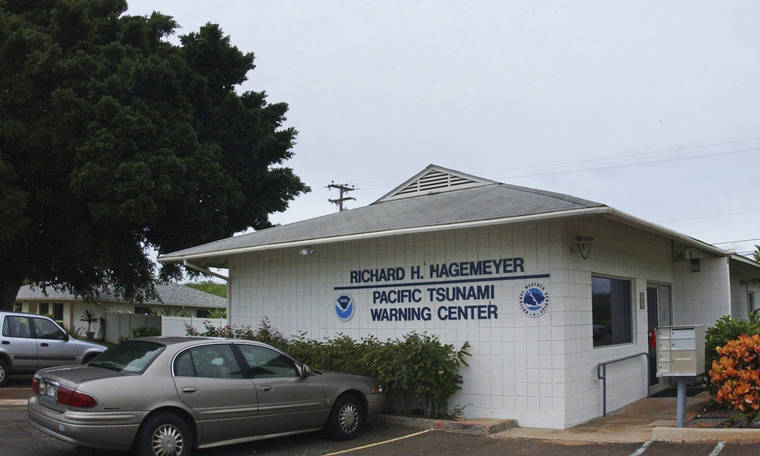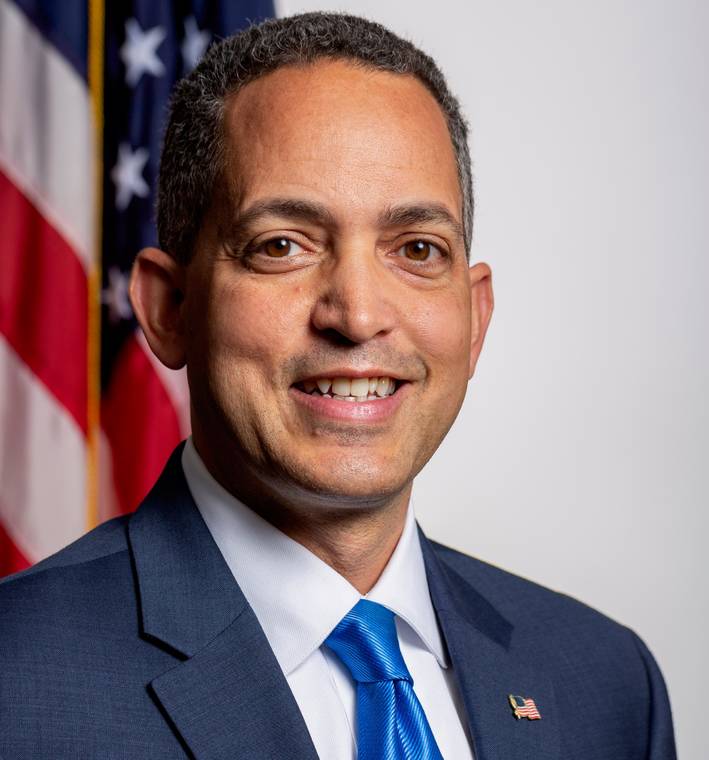The federal government is transferring 80 acres on Oahu, with the potential to provide homesteads for 200 to 400 Native Hawaiian families, to the state Department of Hawaiian Home Lands, top Biden administration executives announced Monday.
Secretary of the Interior Deb Haaland and Deputy Secretary of Commerce Don Graves said in a press conference the property at the former NOAA Pacific Tsunami Warning Center helps address a $16.9 million debt the federal government incurred in 1998, satisfying $10 million of the total amount.
But the debt the United States owes to native peoples goes far beyond that, according to Haaland, a native American and the first indigenous Cabinet member.
“Yes, it’s a happy day, but it’s also a sad day because we remember the tragedy that befell the Native Hawaiians throughout their tumultuous history,” said Haaland, her voice breaking with emotion. “Since that time, our country has learned a great deal. And now we are in an era where we recognize the importance of healing the generational traumas that caused pain and heartache.”
With the 100th anniversary of the signing of the Hawaiian Homes Commission Act less than a month away, Hawaii County Councilwoman Sue Lee Loy is sponsoring a resolution to be heard Wednesday, creating a centennial celebration from July 9 to July 8, 2022.
Both the state Senate and state House adopted resolutions earlier this year recognizing the anniversary.
President Warren G. Harding signed the Hawaiian Homes Commission Act of 1920 on July 9, 1921, setting aside approximately 200,000 acres of reserved land to establish a permanent homeland to return Native Hawaiians to leased parcels of land, while encouraging self-sufficient farming and ranching . The program grants 99-year leases for residential, agricultural or pastoral purposes at an annual rental of $1.
But the state has been woefully slow placing families on homesteads, in part because much of the land lacks needed infrastructure such as roads, electricity and water.
Fewer than 9,000 families have been placed, while there are a combined 28,730 families on three separate wait lists as of June 30. Of the 45,869 applications (some families applied for land on more than one island), 14,974 are seeking land on Oahu, 15,178 want land on the Big Island, 9,212 applied for land on Maui, 4,294 for Kauai, 2,141 for Molokai and 70 for Lanai.
“They literally died on the waiting list,” said U.S. Sen. Mazie Hirono, a Democrat representing Hawaii.
Sen. Brian Schatz, also a Democrat, said this is the first transfer of land suitable for homesteading.
“It helps fulfill a promise made … righting past wrongs perpetuated by the government of the United States,” Schatz said. “This really is an important day that marks an important step toward justice.”
Rep. Ed Case, a Democrat representing urban Honolulu, said the transfer is “an incredible achievement a long time coming and the right thing to do.”
Rep. Kai Kahele, a Democrat representing rural Oahu and the neighbor islands, called it “a step in the right direction.”
It’s not yet known how long the transfer will take and when families can begin hoping for a settlement opportunity there.
The federal government continues to look at its Hawaii landholdings to see if other land might also qualify for transfer, said Ka‘i‘ini Kimo Kaloi, director of the Interior’s Office of Hawaiian Relations.
“Right now we do not have any properties in the hopper, but I know the research is ongoing,” Kaloi said, adding that the largest federal landowner on Hawaii is the Department of Defense.











